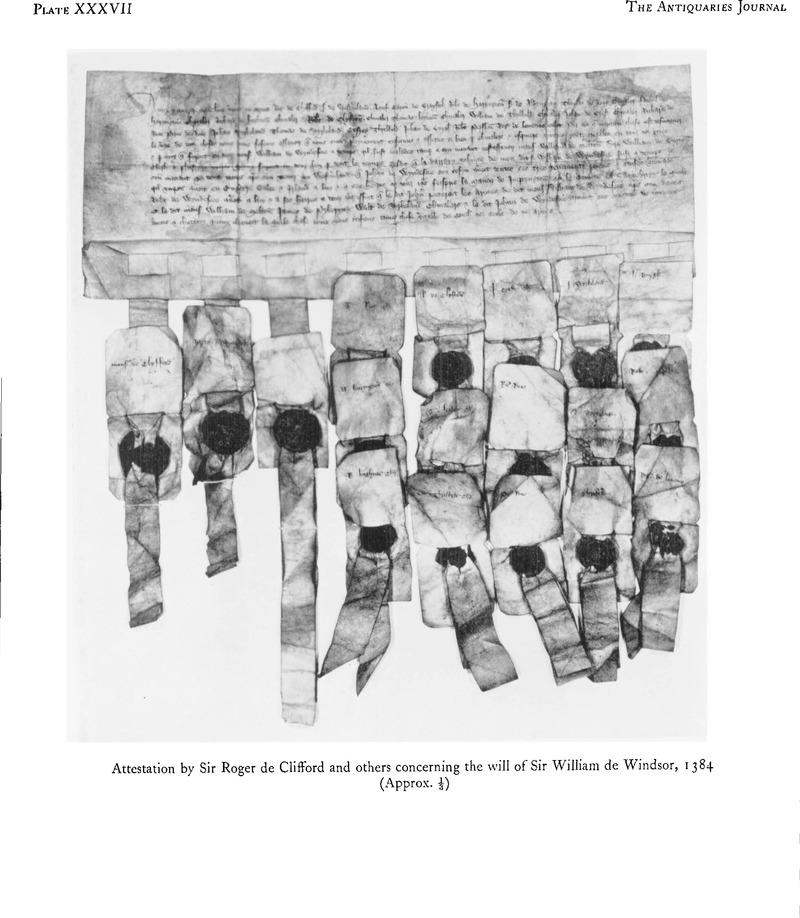No CrossRef data available.
Published online by Cambridge University Press: 29 November 2011

page 225 note 1 It is kept in the Aerary, Dean's Cloister; its number is W.R. XV. 24. 110.
page 225 note 2 The evidence given by these witnesses appears to conflict with that in the Inquisitions Post Mortem and with the terms of the nuncupative will proved on 12 October 1384. Cf. G.E.C., , Complete Peerage (1898), vol. VIII, pp. 183–4. This attestation, which has not been used by previous peerage historians, will be discussed in the forthcoming volume of the revised Complete Peerage, sub ‘Windsor’.Google Scholar
page 225 note 3 P.C.C., Rous I.
page 225 note 4 All the surviving seals are armorial; the list of those sealing is given below.
page 225 note 5 There is, for example, a fine document of 20 March 1478 at Windsor sealed by Queen Elizabeth Woodvile, Cardinal Bourchier, and thirteen others, in which the names of those sealing are written at the foot of the parchment, above the appropriate tags. (W.R. X. 4. 23.) Cf. also Giry, Manuel de Diplomatique (1894), p. 629.
page 225 note 6 I am most grateful to Sir Hilary Jenkinson, to Mr. Charles Clay, and to M. Pierre Chaplais, for the opportunity of discussing this document with each of them, and of profiting by their suggestions.